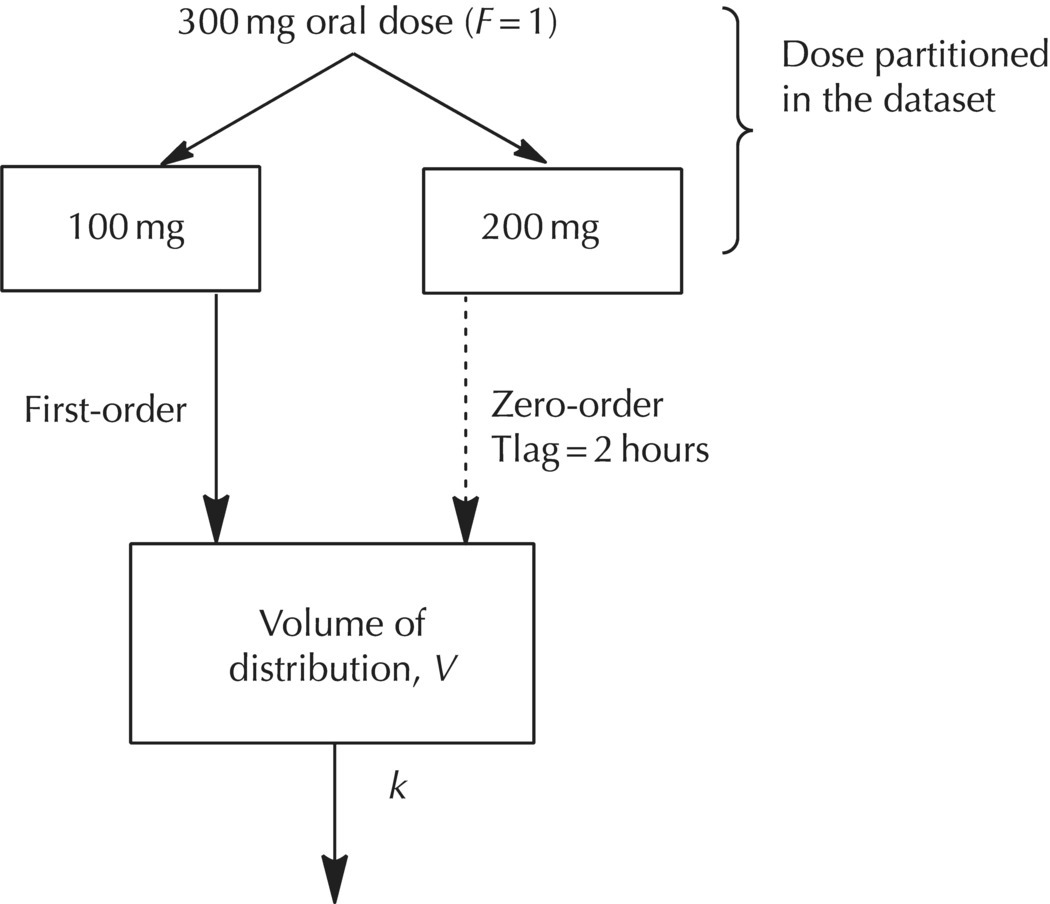
TVLAMBDA : 0. TVQ : 1 : 6 Intercompartmental Clearance (L.h-1) 8.5.1 Choice of ADVAN Subroutines NONMEM versions 7.2 and 7.3 have four PREDPP subroutines (ADVAN6, ADVAN8, ADVAN9, and ADVAN13) that solve differential. TVKA : 0.1 : 3 Absorption rate constant (h-1)

$TABLE ID TIME EVID AMT CMT DV MDV TOLD F1 PRED IPRED IWRES IRES ONEHEADER NOPRINT FILE = run301.TAB FORMAT= s1PE16.8E3 $ESTIMATION METHOD=1 INTER NOABORT MAXEVAL=0 SIG=3 PRINT=5 POSTHOC FORMAT= s1PE16.8E3
Nonmem advan13 code#
Please find below the code for NONMEM analysis and for mrgsolve which is the package I use to perform simulations in RĭADT(2) = KA * A(1) - K20 A(2) - K23A(2) + K32 A(3) Would any of you have an idea of why NONMEM does not return the same predictions ? Besides, as excepted, I found that all individuals had the same value for F1 (at a given time point). My problem is that NONMEM found different concentrations in these 28 individuals, even though they received the same dose. Then, I estimate these concentrations in maximum a posteriori Bayesian manner (MAXEVAL = 0) with ADVAN 13 (there is no inter-individual nor residual variability). All these lines are filled with EVID=0, DV=., and MDV=1. different “sampling occasions” at 0h, 6h, 12 and 18h post-dose at day 1 for ID1, at day 1&2 for ID2, at day 1&2&3 for ID3, and so on until ID28 who has a complete PK exploration from day 1 to 28.

the same dosing regimen of 400 mg qd for 28 days (one line with EVID=1 per administration, no ADDL). On the other hand, we have a dataset of 28 IDs with: LAMBDA = THETA(2) / 24 TIME is in hour, Lambda in day-1į1 = 1 - MAXDECR + MAXDECR * EXP(-LAMBDA * TOLD) $MODEL COMP=(DEPOT) COMP=(CENTRAL) COMP=(PERIPH)

Instead of the variable TIME, I use a covariate TOLD (Time Of Last Dose) in order to be sure that the value of F1 computed by NONMEM will be independent of the time used for computation: On the one hand, let’s introduce a bicompartmental model with a depot compartment, where bioavailability is decreasing over time given a maximum in decrease (MAXDECR) and a first-order decay constant (LAMBDA). Here is a simplified example of my issue: I’m struggling for a couple of weeks against contradictory results between NONMEM and R analysis of the same data with the same model which includes a time-varying bioavailability.


 0 kommentar(er)
0 kommentar(er)
